The SM22080S3/120G 120GB -
M.2 SATA and PCIe drives are much thinner than regular mSATA drive are, but still manage to maintain the same performance profile. These drives are also going to be much longer in most cases, as your average mSATA drive is going to be 55mm long (although there are 78mm drives as well). As you can see in the image below M.2 drives are easy to spot in a crowd.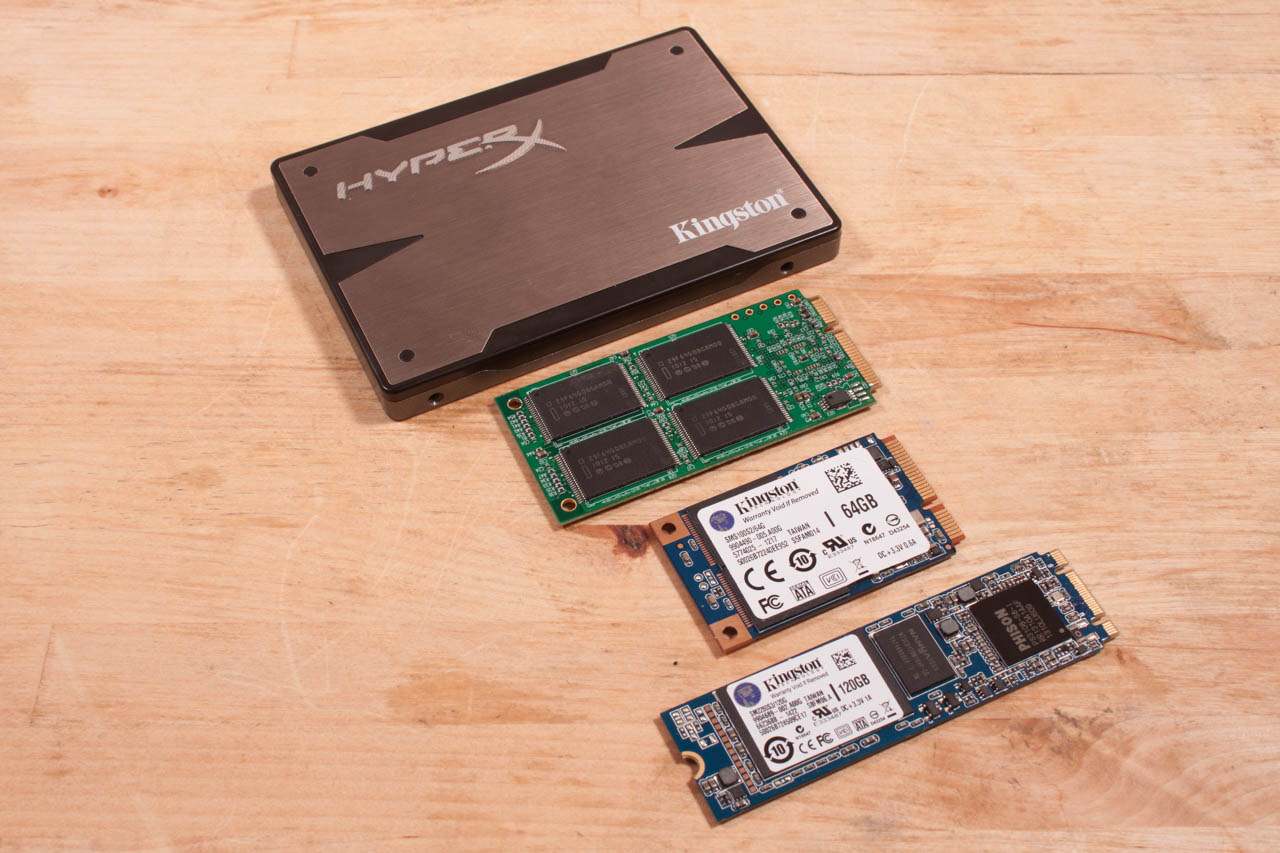
The Kingston drive uses a Phison PS3108-S8-I SATA to NAND Flash controller chip. This is what allows the drive to communicate between the NAND Flash Modules and the SATA interface. In a PCIe or SATA Express device a different controller would be required. The PS3108-S8 has some solid specifications and is a good choice for this drive:
Controller Highlights
Compatible with SATA 3.0 specification
Compatible with SATA I/II/III 1.5G/ 3G/ 6Gbps interface
Support 2Gb/4Gb DDRIII Cache
Built-in enhanced up to 72bit/1KB ECC circuit (BCH)
Program RAM (Program Upgradable)
Physical Characteristics
Fabricated in 55nm CMOS process
Available 324-pin BGA package
Operating Voltage: 0.9 ~ 3.6V
Built-in Regulator that supports 3.3V/1.8V Flash I/O
NAND Flash Support
Supports 10/20+nm flash
Supports up to 64 chip-enable pins
Supports interleave, 2-plane and 8-channel Flash access
Supports SLC/MLC large block (8K/16K page) NAND Flash Memory
MLC sequential R/W speed up to 520/460 MB/s
Other Features
Built-in static and dynamic wear-leveling
Power Saving implemented
Supports model name information update
Moving on to the actual Flash modules used on the SM22080S3 we find Kingston’s very own FA32B08UCT1-BC modules. These are 32GB each with the four on the M.2 card totaling up to 128GB RAW and 120GB available.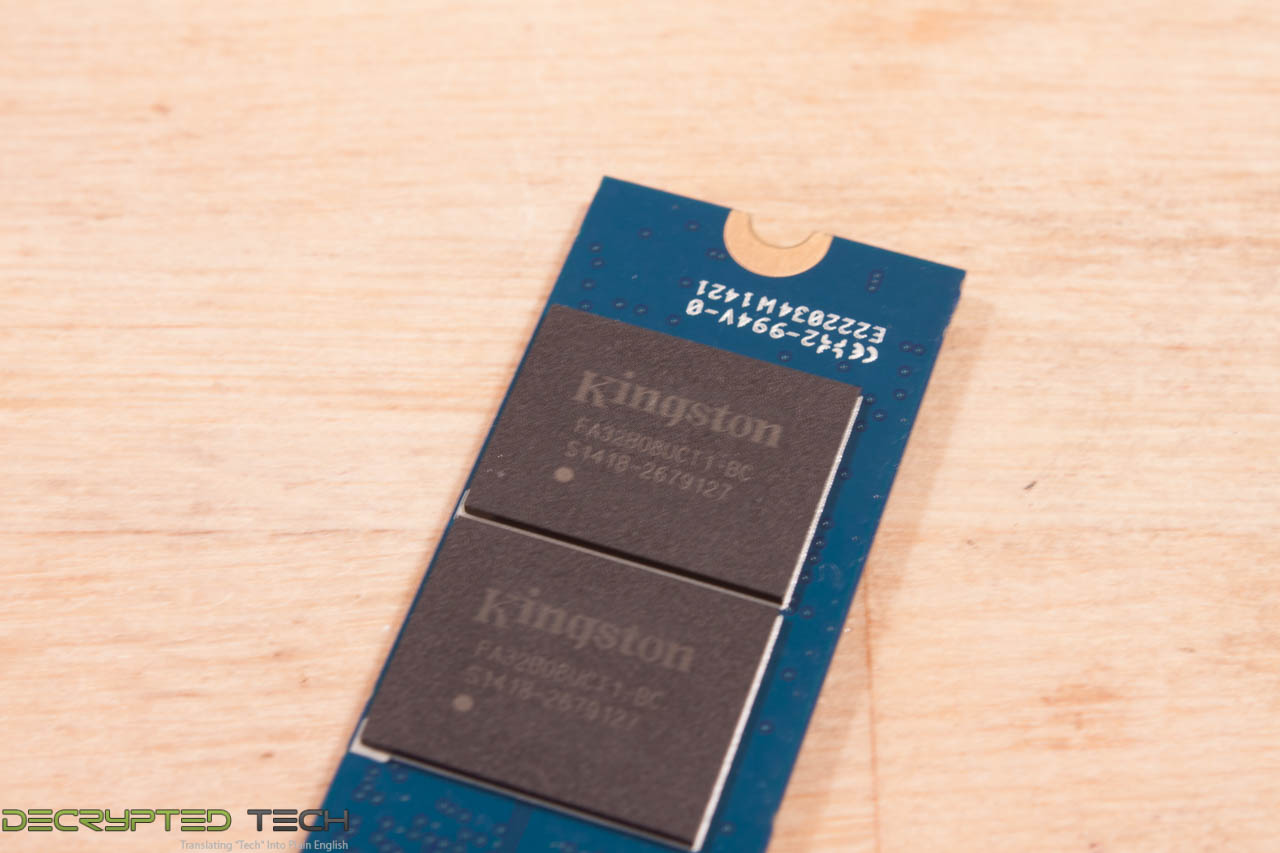
Another interesting item on the drive is a NANYA DDRIII chip, according to the specs that we could find on it this is a 2GB module so this is most likely the cache for the drive.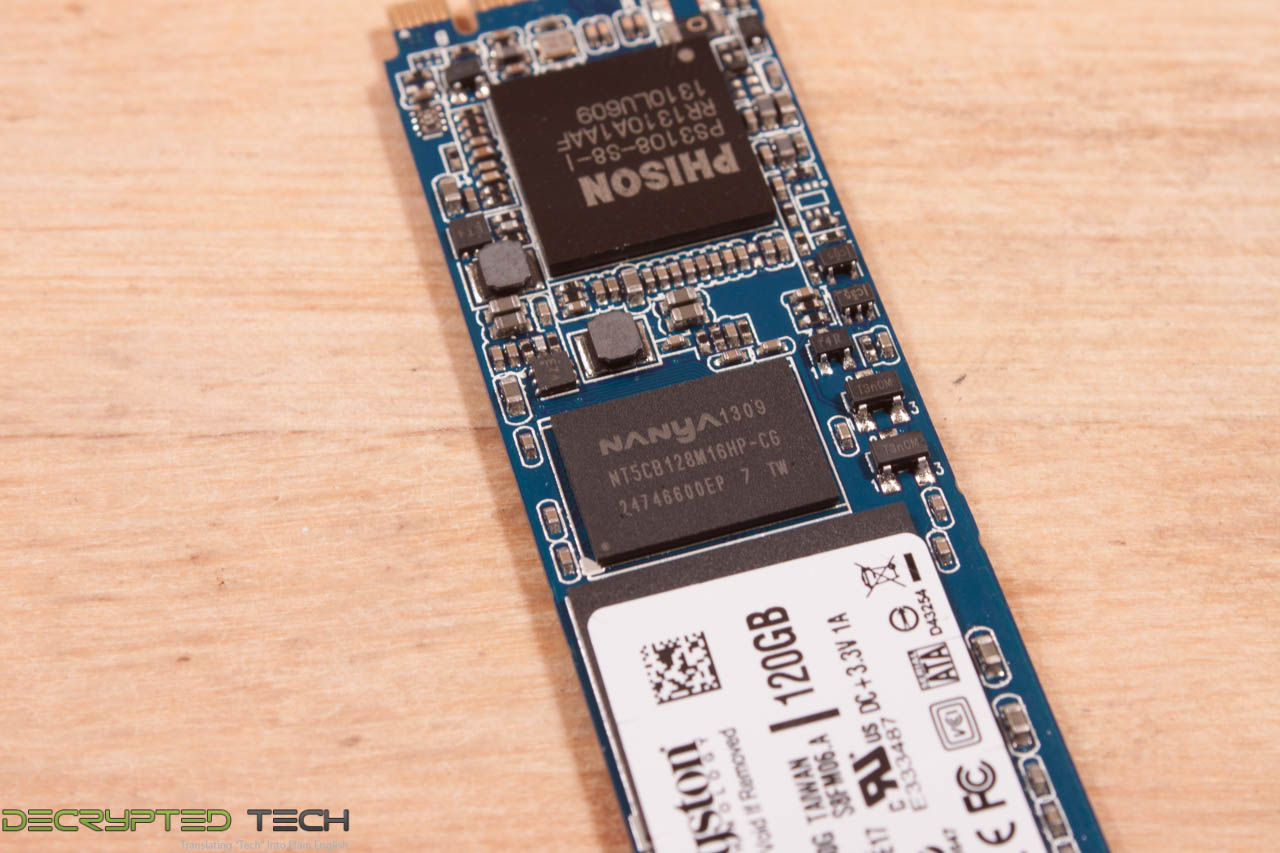
All in all the SM22080S3 is looking like it could be a nice drive. Let’s run some tests and find out. 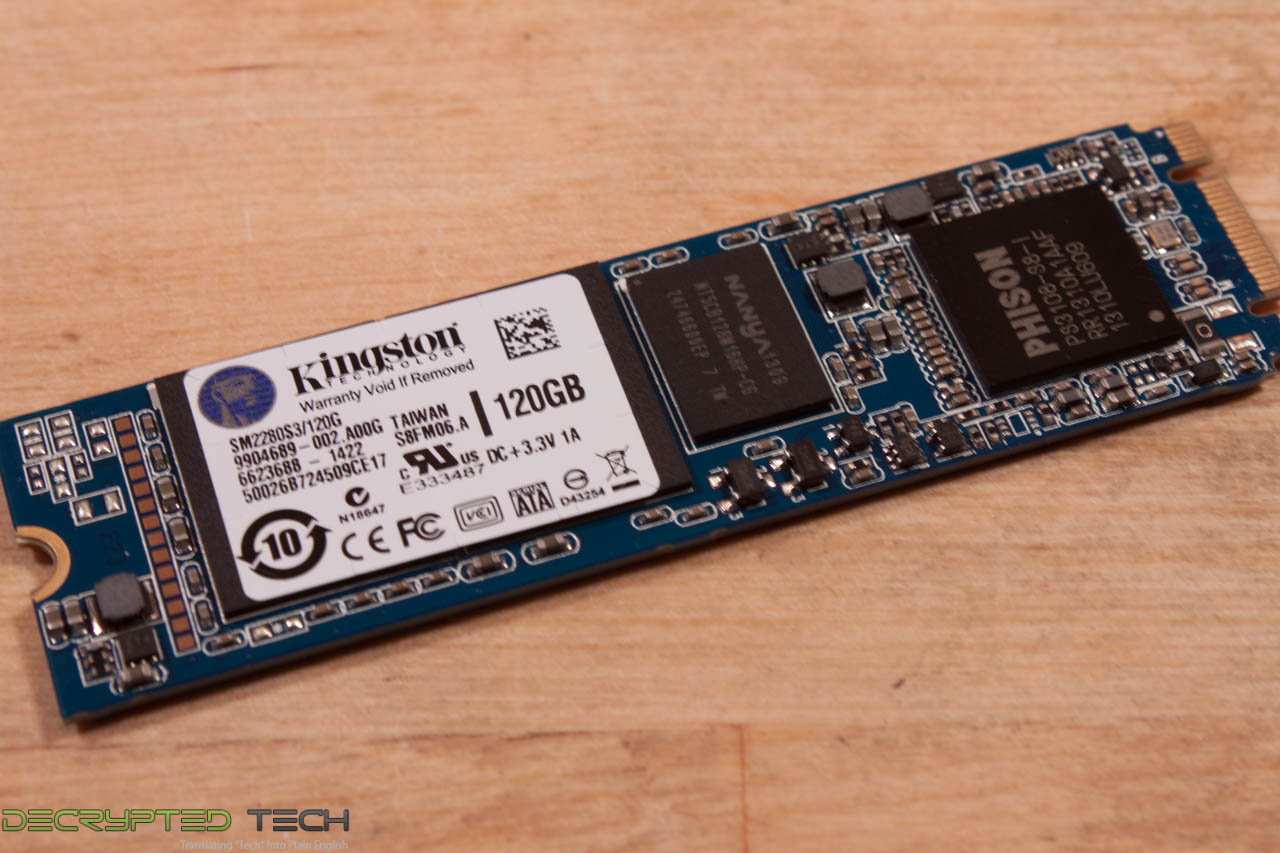
Performance -
Testing the performance of a drive of any type is a pain. Sure you can get repeatable numbers using a few of the more readily available testing utilities; HD Tune Pro, Sisoft’s SANDRA, and others. For our testing we decided to run HD Tune Pro along with HDTach and PCMark8’s storage tests. Between these we felt that we were able to compile a good range of information about the performance of the driver under synthetic workloads. To add to this we did a large disk to disk 30GB file transfer (moving from one SATA 3.0 SSD to the test drive and back) to get a good feel for real world read and write performance. The results are shown below in graph form as well as the actual screen shots of the results.
PCMark8 Storage Tests -
We moved from the older PCMark7 Storage tests to the newer PCMark8 after making sure there were not testing anomalies. The new tests are very similar to the older, but they appear to give a little more accurate measure of what you might expect in the real world. Our graph does not show that many devices simply because the older ones are no longer available. We will continue to build on our testing group as newer products come out.
Under the PCMark8 we find the smaller (physically) M.2 drive shows some pretty good performance. Of course some of this could be due to the smaller drive size, but it is not likely that we would see this large of a gap just because of that.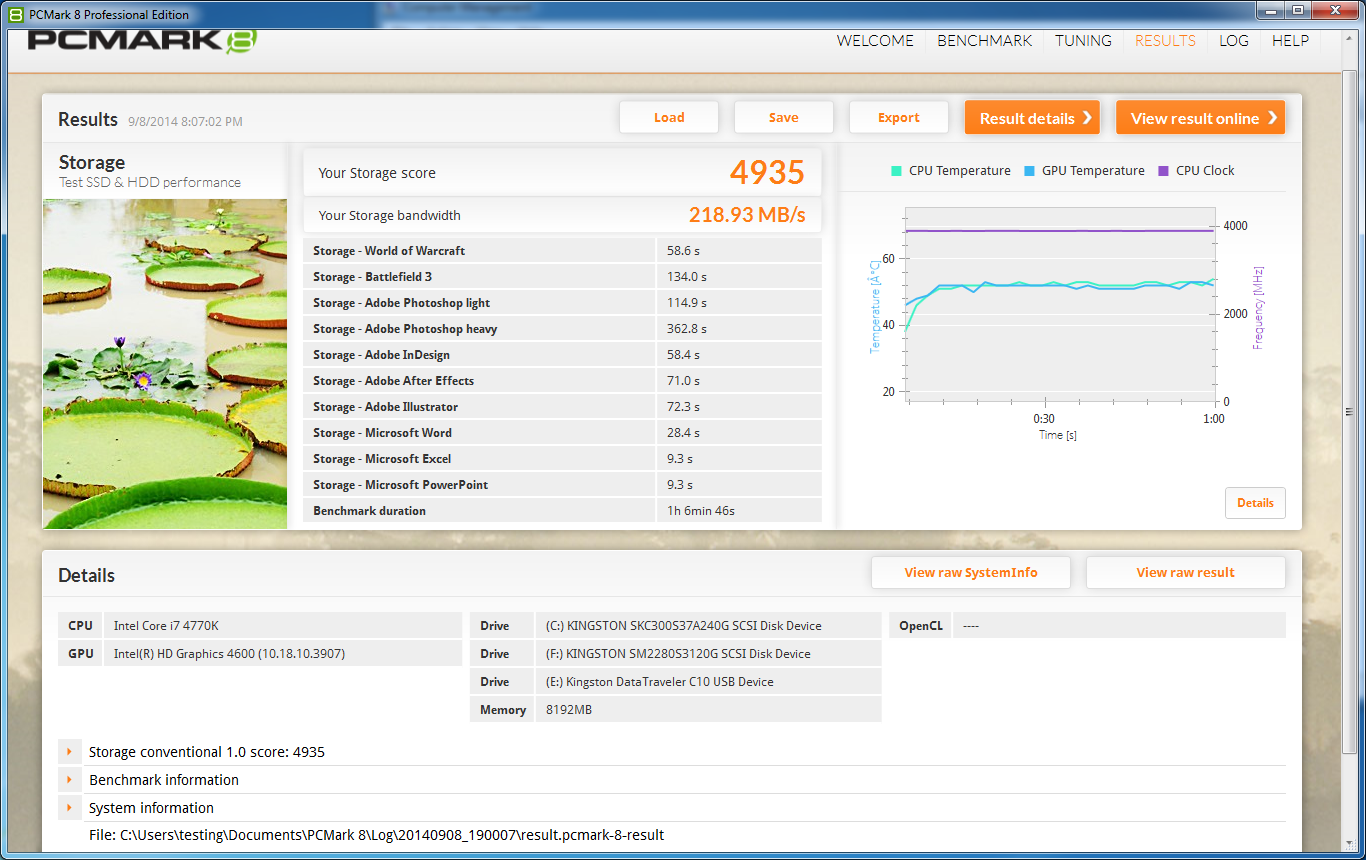
HDTach -
HDTach is an older application, but it is also one that we have had good luck with. It follows the same style of testing that we find with PCMark, HDTune and even Atto Diskbench. It reads from the disk to see what the maximum, minimum and average speeds are. We shows the maximum speed in the comparison chart, but you can see more data in the screenshot below.
Here we see an interesting phenomenon. Remember that little NANYA DDRIII module? Well it is coming into play in this test. HDTach uses incompressible data in its read test. This makes the SM2208 seems much faster than the HyperX drive. In the real world that does mean that sequential reads of data that does not compress well (like audio) will perform much better on the SM2208 than it would on a standard SSD.
HD Tune Pro 4.6 -
HD Tune Pro is another application that can give you the run down on your HDDs it performs both read and write tests although its write test is destructive and cannot be run on a drive that contains any partition information. For our testing here we ran both the read and write tests and recorded the average transfer rates.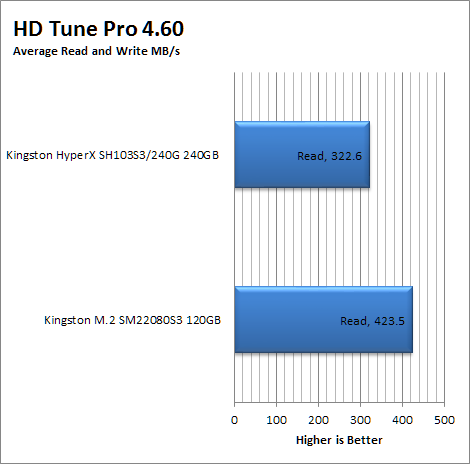
HD Tune uses incompressible data in its read test just like HDTach. This test will favor any drive with DRAM cache like the SM2208. This is why we are seeing such a delta in performance with this test, unlike PCMark8.
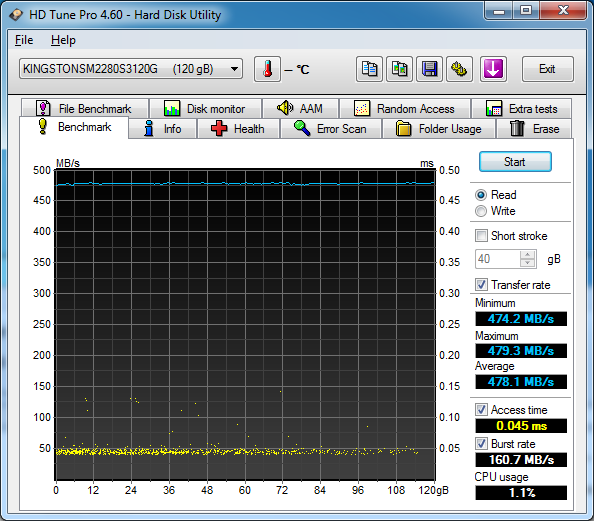 |
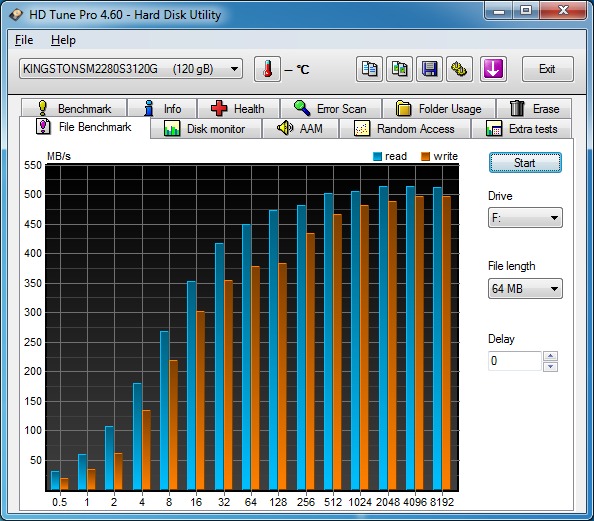 |
Sisfot SANDRA –
Sandra is a multi-function testing a diagnostic tool that we have used to test just about everything from CPUs to USB drives. For testing the SSDs we use the typical physical drive test which gives a good reading of drive performance. It also does not use non-compressible data so we should see a more normal result.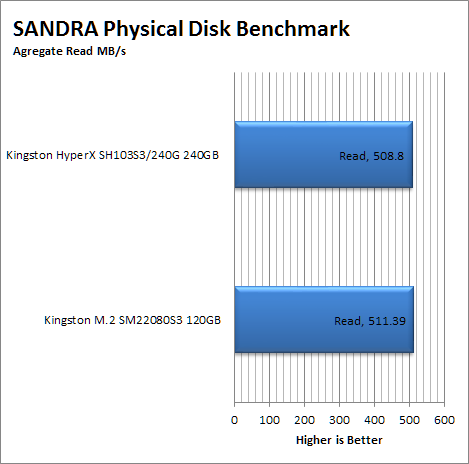
The Kingston SM2208 does a little better than our HyperX model did, but not dramatically so. It puts the two drives in about the same performance level.
Real-World file transfer -
As a final test we took two 7.4GB ISOs and moved them from the main system HDD (a Kingston SH100S3B on the SATA 3.0 Controller) to the target drive. This was timed and the max transfer time was recorded. We also took the time for some subjective testing to see how fast the drives “feel” The scores and our observations are below. For the transfer of 15GB of data from one drive to the other internally it took a little under 88 second with a high transfer rate of 359MB/s not bad at all really.
Value -
Value is another very subjective topic. What is expensive to some might be a deal to others. You can look at this topic in multiple ways. One is raw price and the other is what you get for the money. Each is accurate and both are correct ways to look at price/value. We tend to look at features, performance and real-property when we discuss value. However, we also take into account the raw cash cost of the item. We found the Kingston 120GB SM22080S3 online for anywhere between $89 and $130 depending on the e-tailer we looked at. This gives it a pretty good price range if you grab it for around $90. You will need a motherboard or system that supports M.2 in SATA which might be a little more difficult. We found that many new motherboards only support PCIe flavors of M.2 drives which is something of a pain. Digging up a motherboard with real support for M.2 SATA might change the actual cost of having one of these drives in your system.
Conclusion -
The M.2 SATA is an interesting product with some very nice features that play into the consumer market. In looking at the performance for non-compressed data we find that these drives should be excellent for multi-media based systems. In other words, just about every consumer computer on the planet could make use of an SSD with DRAM caching. It also allows manufacturers to build smaller systems and maintain the same level of performance that you get from a regular SATA drive. The Kingston SM22080S3 is an excellent example of what can be done with this form factor. Again, you might have to do some looking to find a board that will work with it, but the performance is certainly going to be there when you do. The price is also very good considering this is a newer form factor. We are impressed with the SATA flavor of the M.2 form factor and honestly can’t wait to see what the PCie versions will bring to the table once they are more prevalent. For now, if you have an M.2 SATA port on your new motherboard then you might want to think about picking up a Kingston SM22080S3 drive in either 120GB or 240GB. It would make a great boot or caching drive.
Tell us what you think in our Forum



